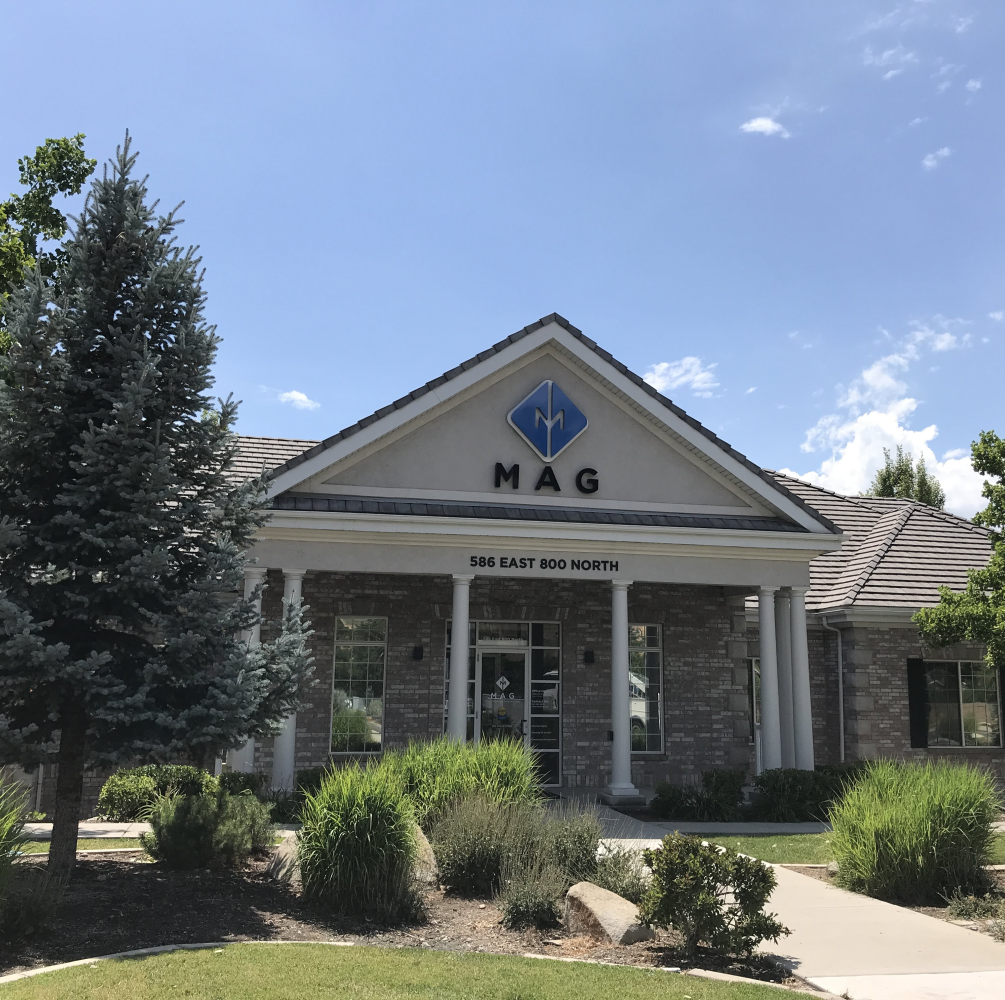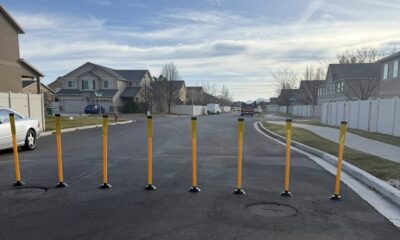Politics & Government
Road to gridlock: Utah County leaders clash over transportation planning
Published
7 months agoon

Rob Shelton | Lehi Free Press
As Utah County’s population swells, traffic congestion worsens and residents’ frustration grows. Local and state leaders are increasingly at odds over how transportation projects are prioritized and funded, with particular focus on the critical east-west connectors in the county’s northern communities.
During a recent American Fork City Council work session, Senator Brady Brammer expressed significant concerns about the Mountainland Association of Governments’ (MAG) approach to transportation planning, claiming the regional planning organization’s decisions are “92% correlative to one variable, and that is congestion.”
“You’re always chasing rather than leading,” Brammer told council members. “We have asked them to give us some options, or show us some options of how they would modify their formula for the determination of where they would place streets, and they have not been able to provide any alternative methodology thus far.”
The exchange highlights growing tensions between state legislators, municipal leaders and regional planners as they grapple with unprecedented growth and limited transportation funds.
Rapid growth outpacing infrastructure
Mayor Brad Frost, who serves as MAG’s vice chair, acknowledged the need for significant changes in how transportation projects are prioritized.
“I think we would probably look at maybe changing the entire metrics of how we put projects in, through all the different committees, through technical review. It’s a culture change,” Mayor Frost said during the meeting.
The stakes are particularly high for rapidly growing communities like American Fork, Saratoga Springs and Eagle Mountain, where transportation infrastructure has struggled to keep pace with development.
“The growth goes in, and then all of the arterial roads get built after the growth; after everyone’s quality of life goes way down,” Brammer said, capturing the frustration felt by many residents who contend with increasingly crowded roadways.
Mayor Frost emphasized that planners need to look beyond typical time frames, saying, “At this point in this entire valley, buildout has to be where we’re looking at, and not just even a 20- or 30-year window.”
MAG defends planning process
LaNiece Davenport, MAG’s Metropolitan Planning Organization Director, defends the organization’s approach while acknowledging room for improvement.
“MAG does not rely solely on congestion data,” Davenport stated in a written response to questions about the criticism. “We recognize the need for a balanced approach that is both responsive to today’s realities and forward-looking.”
According to Davenport, MAG’s Regional Transportation Plan integrates “population and employment growth forecasts, land use planning, and modeling to proactively develop transportation solutions.”
In a separate interview, Davenport explained that transportation planning involves multiple stakeholders and significant constraints.
“A lot of the projects that need to take place, there are more obstacles that come about,” she said. “They’re larger, more expensive projects. They’re going through maybe geographical, topographical or contentious land ownership areas.”
For east-west connections in north Utah County specifically, Davenport cited the Jordan River, gravel pits, federally-owned land at Camp Williams, and Utah Lake as physical barriers complicating transportation development.
Funding gap grows as needs increase
The funding situation remains dire. MAG has identified $20.4 billion in needed transportation infrastructure projects between now and 2050 but anticipates only being able to fund about $15 billion of these projects, leaving a $5.4 billion shortfall.
Johnathon Knapton, a MAG representative who lives in Eagle Mountain, described the challenge from a resident’s perspective.
“I drive on Pioneer Crossing twice a day,” Knapton said. “I think one of the things that are important as we’re talking about the frustration that residents have, which is justified and understandable, is there is an education aspect that comes with it too.”
Knapton emphasized that infrastructure typically follows development. “You can’t build the infrastructure before the city exists, before the expansion happens. If you’re going to widen the road, you have to have tax revenue. That means that you have to have the houses.”
Legislative concerns about the process
State legislators argue they’ve been pressing MAG for more forward-thinking planning methodologies without success. This disconnect has apparently hampered Utah County’s ability to secure state transportation funding proportionate to its growth rate.
“We actually asked MAG for their metrics, and they were very resistant for a long time to give us their spreadsheets and their metrics,” Brammer said during the work session. After analyzing the data, he claimed legislators found the high correlation to congestion rather than anticipated growth.
Davenport acknowledges these concerns and says changes are underway. “We plan to present for review and discussion a set of proposed project screening criteria for review in the fall of 2025 and a set of project phasing criteria in the winter of 2025,” she stated.
Seeking more collaboration
Both sides agree that better collaboration is essential. MAG has begun efforts to engage more directly with state legislators, with Davenport noting she has recently met with several lawmakers including Brammer, Representatives Christopherson and Moss, and Senator Valdez.
MAG is also proposing to add legislative representatives to its governing board, with Davenport stating, “I’m requesting that our board include one representative from the Senate and one from the House as voting board members, just to make sure that they’re engaged in our process.”
The organization has engaged a consulting firm to evaluate its current processes and is working on multiple studies, including the Transit Fresh Look Study and the Regional Roadway Grid Network Study.
For residents stuck in traffic on overloaded roads like Pioneer Crossing or waiting for promised connector roads that haven’t materialized, these changes can’t come soon enough.
“It takes all of us working together,” Davenport emphasized. “I couldn’t agree more about the collaboration.”
Racing against time
As Utah County’s population continues its explosive growth trajectory, time has become a luxury that officials at every level of government can no longer afford.
Time is running out as traffic congestion reaches critical levels during peak hours on major corridors throughout Utah County. The promised east-west connectors that would provide relief for northern Utah County commuters remain largely unrealized despite years of discussion.
Local leaders, regional planning officials and state legislators find themselves in a race against time. The traffic volumes are increasing daily as new developments continue to be built, particularly in the northwestern quadrant of the county that Senator Brammer described as growing at “an 18% clip” over the past decade.

You may like
-


Pioneer girls drop three to tough teams in hoops
-


Give a piece of Lehi from the Lehi Historical Society gift shop
-


Students, Jazz Bear team up for annual holiday shopping event
-


The Ruth’s “Charlie and the Chocolate Factory” a whimsical treat
-


Lehi Free Press
-


UCHD confirms new measles case in Utah County
-


Barriers near 2100 West cause confusion for Lehi residents
-


Lehi to host national hoops showcase
-


Pioneer boys begin with tough schedule
-


Falcon boys make promising start

